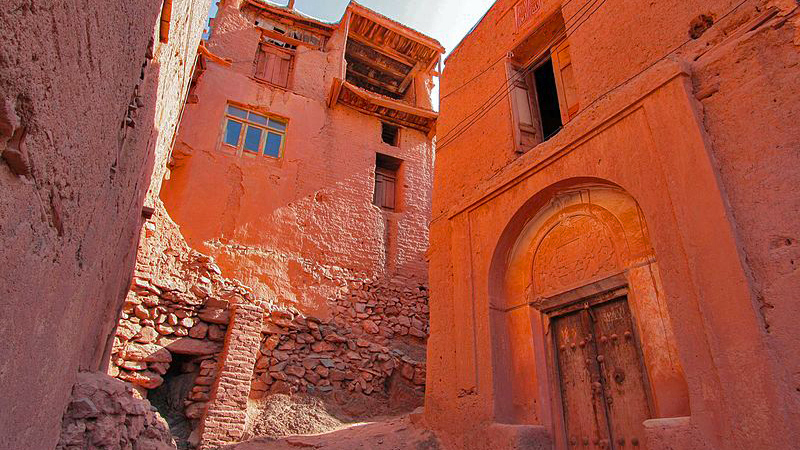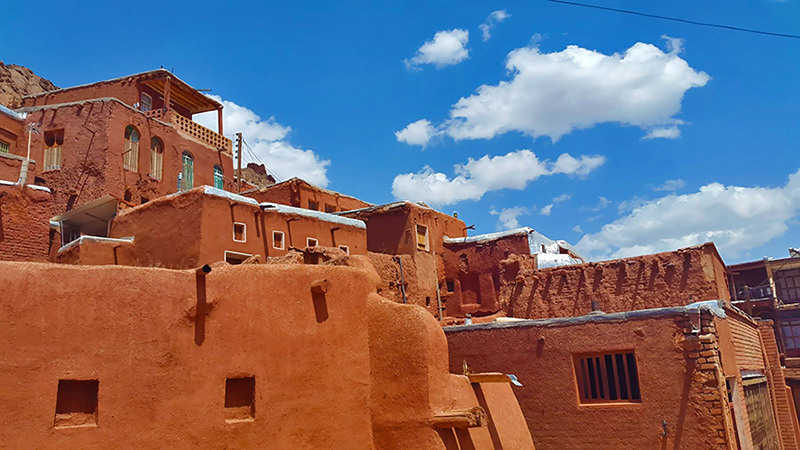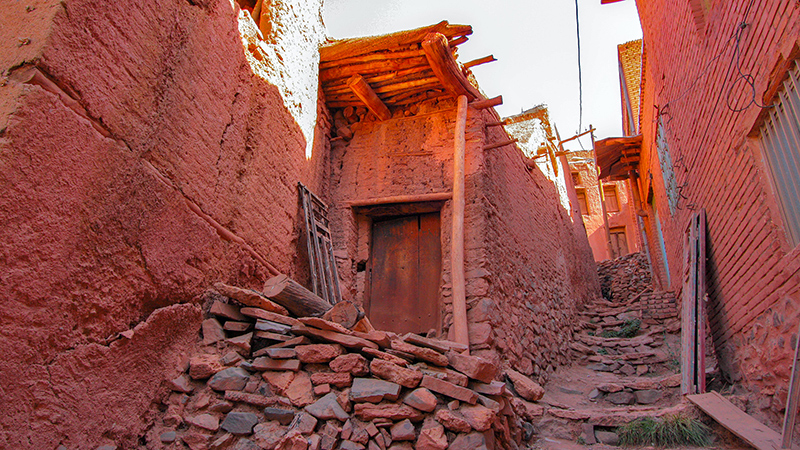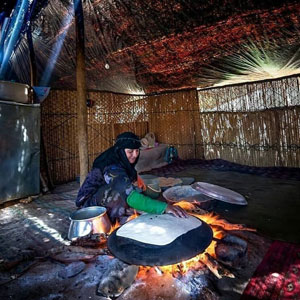 Signin with Google
Signin with Google Signin with Facebook
Signin with Facebook Places
PlacesThen, Abyaneh Arose from the Red Soil

Abyaneh, a Living Rural Museum
A decent neighbour for Kashan sits on the hillside of the glorious mountains with red stepped houses and mud-brick alleys. Abyaneh is like a red emerald of Iran that each Iranian would boast about visiting and keeping a photo of it in his/her album because it’s a must-see village in the whole of Iran that one cannot miss.
An extraordinary historic village in red
Abyaneh is located on the road of Natanz to Kashan. After driving on a straight road that seems to reach the mountains, the first sight of this ancient village is so impressive as you slowly move down the road and find the stepped distinguished village surrounded by beautiful mountains and seasonal rivers. Houses built by simple natural materials of mud bricks and wooden beams are structurally sound for hundreds of years. The colour of the soil in this part of Iran is so unique. The high level of iron oxide gave a beautiful reddish hue to the land. So, the multi stored buildings in Abyaneh have a fine red ochre facet with lattice windows and wooden balconies.

Leave the presence, travel in time
From the Sassanid time to the present time, Abyaneh has kept its originality in most aspects unlike other remarkable villages in Iran. Abyaneh is constructed by local materials in harmony with the nature surrounding it, but with a unique privilege on the rest of ancient step-like villages, which is the authenticity of its aged-old architecture, the local dialect, costumes and ceremonies.
Passing through narrow alleys, wherever seeing the elderly people sitting side by side, is a good chance to hear the Middle Persian language, the ancient language of Sassanid Pahlavi language. The way they dress also is notable. Men wear shirts, very loose black trousers and a black vest. Women's wearing consists of short pleated skirts, colourful middy tonics with a short vest on them and a stunning large white scarf full of flower prints to cover the head. Everyone visiting this wonderful village would love to try these remarkable clothes and take photos. Herpak Fire temple is another monument in Abyaneh village that was built in the Achaemenid period.
Rituals and ceremonies
Abyaneh has a rich history with a hardly changed tradition. One of these preserved rituals is "Jaq Jaqi Zani". This ceremony was performed at Ashora and Tasoua, days for commemorating Imam Hussein’s martyrdom, a grandson of Muhammad, the Prophet. On these days, mourners beat two short wooden cylinders and walk in the alleys from morning to noon. On their way, they stop by every house that presents votive foods and prays for the dead ones. The endpoint for their marsh is Nakhl Gardani. "Nakhl" is a wooden structure symbolically carried on the shoulders of mourners to represent the coffin of Imam Hossein.
"Golab Giri" is another seasonal ceremony that is held in Abyaneh. By May, when Mohamadi Rose flowers, the most fragrant rose type, bloom completely, it is the time for distillation of rosewater or extracting their oil. This local custom is really joyful and lots of tourists plan to be in Abyaneh specifically for this spring festival.

An ancient village with a global reputation
Abyaneh is a reputable Iran's National Heritage Site, receiving millions of visitors every year. There are some unequal attributions in this historical village.
One of the primary mosques of Iran is in Abyaneh. The mosque of the village was once an incomparable Zoroastrian fire temple. This fire temple was built during the Sassanid period (224 AD to 651 AD). In the following years, Muslims used this structure as their praying hall and add splendid decorative elements to it. The old mihrab of Jameh Mosque is a wooden rare work of art designed by Kufic scripts and floral motifs.
A four-season touristic spot
Situated on the northwestern slopes of the Karkas Mountains, the highest mountain of the region, you can see joyful springs, pleasantly warm summers, colourful falls and snowy winters, in this small village. Lots of fruit trees grow in desirable weather and became a source of income for the inhabitants of Abyaneh. Walking through the alleys of this village gives you the chance of sitting under trees, by the seasonal river passing through Abyaneh and enjoying your time. Almost close to the classical touristic road of Iran, Abyaneh is an attractive destination for full or half-day visits.
By Samaneh Zohrabi / TasteIran



